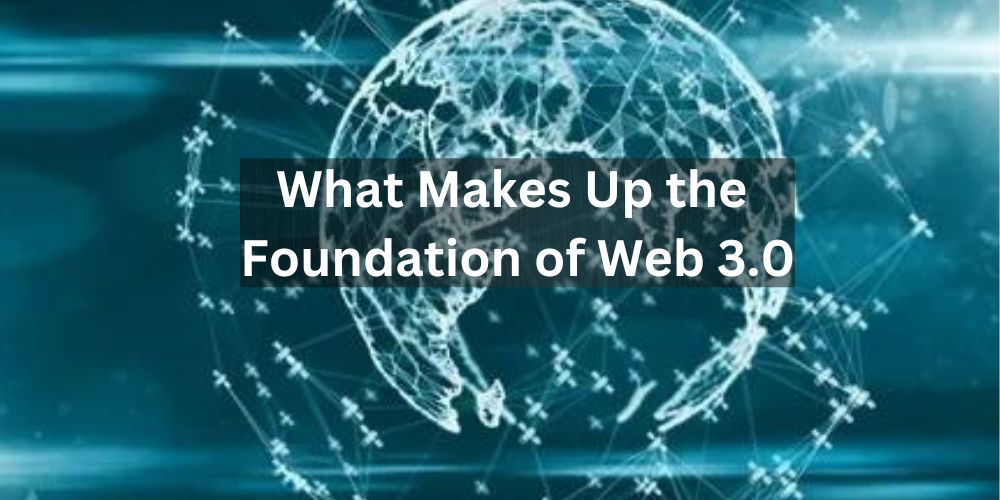The internet is the driving force in the modern era. If we look at our surroundings, almost every gadget we use or have installed in our homes and workplace is connected to the internet. The web has completely revolutionized into a full-fledged medium of connectivity. The current internet is a significant jump from the primary concept of the world wide web (WWW) introduced in 1989.
Now we get to experience breathtaking speeds and seamless interaction due to the advancement of the world wide web. Still, after so much interconnectivity and usability, why are we heading toward the development of Web 3.0 technology? This blog will cover exactly that, walking you through the latest concept of the world wide web, what it is, and how it will impact our lives in the future.
Web 1.0 vs Web 2.0 vs Web 3.0 – A Quick Walkthrough
With Web 1.0, users were only able to read plain text on the internet. It is made of simple web pages connected via hyperlinks. In simple terms, remember it as a read-only version of the internet.
Web 2.0 arrived with read-and-write capabilities, and the recent advancements in the web development landscape made it much more interesting and powerful. On the Web, 2.0 people can read text, stream videos, play games, and much more. Social media sites like Facebook, Twitter, and LinkedIn are examples of Web 2.0 platforms, as are collaborative platforms like Wikipedia and Google Docs.
On the other hand, Web 3 is based on blockchain technology, which allows for peer-to-peer transactions without the use of intermediaries like centralized servers. Web 3.0 intends to give users more data security, privacy, and control. Decentralized finance (DeFi) platforms, Non-Fungible Tokens (NFTs), and decentralized social networks such as Mastodon are significant examples of web 3.0 applications.
What is Web3 Technology?
Web3 technology is all about decentralization, which will not require any intermediaries like servers or corporations that currently control our data and online experiences. Web3 technology is built on several decentralized concepts such as blockchain, smart contracts, and cryptography that make Web 3.0 a secure network for all peer-to-peer transactions, eliminating the need for centralized authorities.
Why Do We Need a Decentralized Web?
The current web’s centralized design raises various concerns, including censorship, data breaches, and control of the web by a few central corporations. Big tech giants like Meta, Microsoft, and many others have grown in no time and have a significant share in web 2.0 development. These authorities have petabytes of user data and can monetize it in various ways.
A decentralized web, also known as Web3 technology, seeks to solve these concerns by dispersing authority and control across the network. With Web3 fully live, users can interact with each other directly without the intervention of a centralized body. The latest technologies such as artificial intelligence and machine learning will also play an integral role especially in automating several web3 processes. Here are some significant advantages that also emphasize the importance of Web 3.0.
Ownership
Web3 technology gives people more control over their data by allowing for decentralized data storage and management. The use of blockchain web3 enables safe and transparent ownership of digital assets including NFTs, that can be bought, sold, or exchanged without the need for any centralized authority.
Censorship resistance
Web3 technology is censorship-resistant, what this means is that it allows for free and open access to information without danger of restriction or manipulation.
Decentralized autonomous organizations (DAOs)
Decentralized Autonomous Organizations (DAOs) are blockchain-based organizations that allow for decentralized decision-making, ownership, and governance. Web technology allows for the formation of DAOs, which are organizations that are administered by code and are governed by an open group of stakeholders.
Native payments
The Web 2.0 payment infrastructure relies on banks and financial institutions, on the other hand, Web3 blockchain technology supports native payments using cryptocurrencies, allowing for peer-to-peer transactions without the involvement of banks and financial authorities.
Now let’s move on to the more technical concepts of understanding web3 technology.
What Makes Up the Foundation of Web 3.0

There are several technologies involved that make it possible to take the internet to a whole new level. Here are two of the core web3 technologies:
Blockchain
Web3 technology and blockchain are very related concepts. In fact, blockchain technology is the primary foundation of the upcoming generation of the world wide web. As the name suggests, blockchain is a technology in which data is stored in the form of blocks and each block contains a cryptographic hash of the previous block. This makes up an immutable chain of records that anyone can verify on the network.
Blockchain works on a distributed ledger technology that enables secure, transparent, and tamper-proof transactions without the need for any middle party. Blockchain is the core of many Web3 applications, providing a way to record and verify transactions on a decentralized network. One major and most ubiquitous example of blockchain is Bitcoin. The blockchain records every transaction on the Bitcoin network, making it transparent and immutable.
Smart Contracts
As the name suggests, a smart contract is a type of agreement between two bodies that are put into a self-executing program. These agreements allow contracts to be completed automatically enabling a transparent agreement. DeFi uses an intelligent contract system to process financial products and services over the network.
Another use case of smart contracts can be set up between the manufacturer and a supplier. For example, a secure agreement based on smart contracts can be made in which the supplier gets the payment automatically after the manufacturer has delivered all the items.
Final Thoughts
Imagine a future in which social media platforms are decentralized and user-owned, your data is secure and protected from any third parties, and transactions are conducted directly without the involvement of banks and authorities.
Web3 is making this idea a reality. Web3 development marks an important step towards a more decentralized and secure internet. Users can interact and communicate directly without the need for any centrally controlled server using Web3 technologies like blockchain and smart contracts. Web3 technology has immense potential, and it will be fascinating to see how it will affect the future of the Internet.
Read more:
Security of Sensitive Data Monitoring: Protecting your information during the Digital Age
















